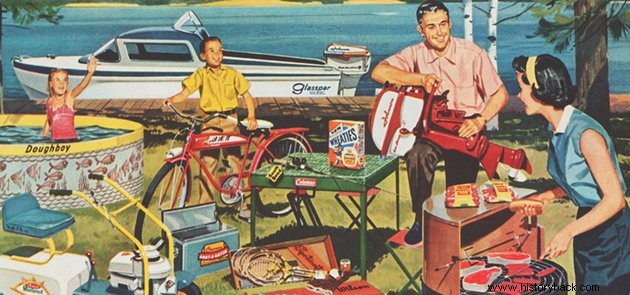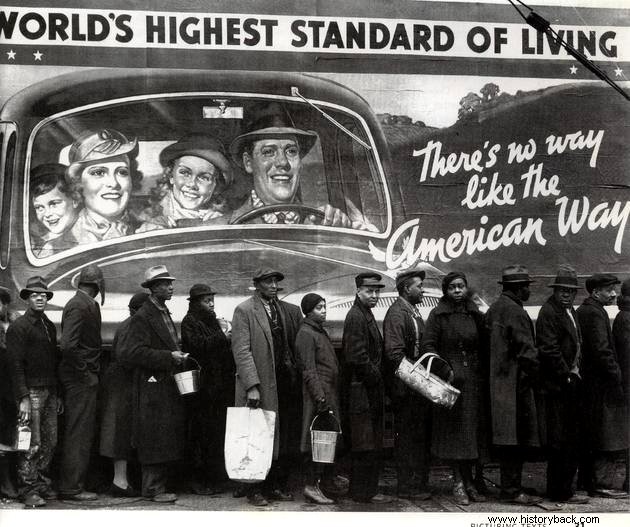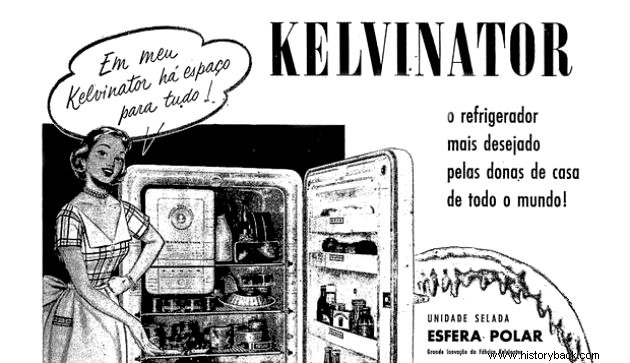American way of life or "American way of life" was a model of behavior that emerged in the United States after the First and Second World Wars.
This way of life involved consumerism, social standardization and the belief in liberal democratic values.
Features of the American Way of Life
The idea of a happy, victorious life where there is freedom defines this American way of life. This happiness achieved by material means became the escape valve to forget the horrors of the First and Second World War.

The American Way of Life it was only possible because of the American technological superiority, the power of its army and the war arsenal developed after the conflicts.
Mass manufacturing enabled large-scale consumption and with cheap credit, Americans took advantage of it to buy goods, often superfluous.
The automobile becomes an object of desire, especially after its cheapness carried out by businessman Henry Ford.
Television becomes an indispensable item in homes and, with it, the dissemination of a certain standard of beauty, life and behavior.
That's why the United States sold the idea of happiness through consumption, where buying and enjoying free time in leisure activities are the central axis of existence.
See also:What is Consumerism?Crisis of 1929
This prosperity will be put in check when the New York Stock Exchange crashes and the United States faces a severe economic crisis.

Without being able to manufacture as before, several industries close their doors and unemployment increases. Thousands of people lose their possessions and consumption levels fall.
To lift the American economy, American President Franklin Roosevelt (1882-1945) launches the New Deal program. However, it was only with the Second World War that the US regained its productive capacity.
See also:Crisis of 1929 (Great Depression)Cold War
The American Way of Life emerges with force after the Second World War. In this way, the American model imposes itself all over the world and will be the well-being reference for western capitalist countries.
Thus, the United States built a virtually unemployment-free society where all dreams could be realized.
This showcase of a perfect and egalitarian society, sold through films and advertisements, will be instrumental in the fight against the Soviet Union and communism during the Cold War.
See also:Cold War:features, causes and consequencesThe Other Side of the American Lifestyle
However, not every society has benefited from this prosperity.
Afro-descendants were excluded from civil rights during the first half of the 20th century and in the 50's and 60's there were great demonstrations for legal equality.
Anti-communism also reached hysteria levels with the investigations carried out by Senator Joseph Raymond McCarthy (1909-1957).
In his fight against communist ideas, McCarthy managed to pass a law in which any American citizen could accuse another, without evidence, of being a communist.
This led to real purges in universities, public administration and in the entertainment industry, such as Hollywood cinema.
See also:McCarthyismAmerican Way of Life in Brazil

Brazil was not immune to the American way of life. With the Good Neighbor policy carried out by the United States and accepted by Getúlio Vargas, the Americans became the first exporters of domestic products to Brazil.
In this way, commerce was filled with consumer goods that were only accessible to a small part of the population. Buying on credit and, consequently, getting into debt, was the only way to imitate this standard of living.
After the Second World War, with Brazil's alignment with Western countries, the adoption of the American way of life became evident with the importation of soft drinks, chewing gum, cars and a way of life that prioritized consumption above all.
Read more :
- World War II
- Era Vargas
- United States
- Good Neighbor Policy
